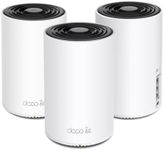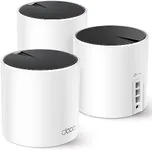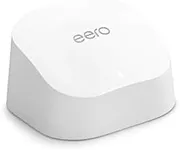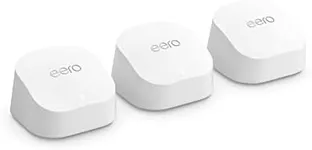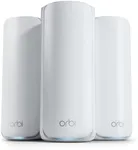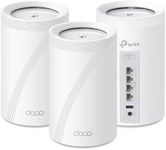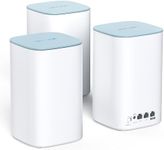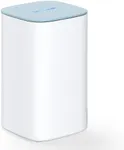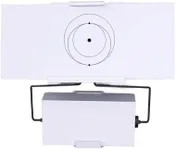Buying Guide for the Best Wifi Mesh Networks
When choosing a WiFi mesh network, it's important to understand that this system is designed to provide seamless and consistent internet coverage throughout your home or office. Unlike traditional routers, a mesh network uses multiple nodes that work together to eliminate dead zones and provide a strong signal everywhere. To pick the best WiFi mesh network for your needs, you should consider several key specifications that will determine the performance and suitability of the system for your specific situation.Coverage AreaCoverage area refers to the total square footage that the mesh network can effectively cover. This is important because it determines how well the network will perform in your space. If you have a small apartment, a system with a smaller coverage area will suffice. For larger homes or offices, you will need a system that can cover a larger area. To choose the right one, measure the size of your space and ensure the mesh network you select can cover at least that much area, with some extra coverage for optimal performance.
Number of NodesNodes are the individual units that make up the mesh network. The number of nodes you need depends on the size and layout of your space. More nodes can provide better coverage and more reliable connections, especially in larger or multi-story homes. For smaller spaces, fewer nodes will be sufficient. Consider the layout of your home and any potential obstacles like walls or floors that could interfere with the signal when deciding how many nodes you need.
SpeedSpeed refers to the maximum data transfer rate that the mesh network can handle, usually measured in megabits per second (Mbps). This is important for activities like streaming, gaming, and video conferencing. Mesh networks come in different speed tiers, such as AC1200, AC2200, or even higher. To choose the right speed, consider your internet plan and the activities you do online. If you have a high-speed internet plan and engage in data-intensive activities, opt for a higher speed mesh network. For basic browsing and streaming, a lower speed tier will be sufficient.
Band SupportBand support refers to the frequency bands that the mesh network can operate on, typically 2.4 GHz and 5 GHz. Dual-band systems support both frequencies, while tri-band systems add an additional 5 GHz band for better performance. This is important because different devices and activities may perform better on different bands. Dual-band systems are generally sufficient for most households, but if you have many devices or need the highest performance, a tri-band system may be a better choice. Consider the number of devices and the types of activities you do online when choosing the band support.
Ease of Setup and ManagementEase of setup and management refers to how simple it is to install and maintain the mesh network. This is important because a complicated setup process can be frustrating and time-consuming. Many mesh networks come with user-friendly apps that guide you through the installation and allow you to manage the network easily. Look for systems that offer straightforward setup processes and intuitive management tools. If you're not tech-savvy, prioritize ease of use to ensure a smooth experience.
Security FeaturesSecurity features refer to the protections the mesh network offers against cyber threats, such as malware and unauthorized access. This is important to keep your data and devices safe. Look for systems that offer robust security features like WPA3 encryption, automatic firmware updates, and parental controls. If you have children or sensitive data, prioritize systems with strong security measures to ensure your network remains secure.
CompatibilityCompatibility refers to how well the mesh network works with your existing devices and internet service provider. This is important to ensure seamless integration and optimal performance. Most modern mesh networks are compatible with a wide range of devices and ISPs, but it's always good to check. Consider the devices you have and your ISP when choosing a mesh network to ensure compatibility and avoid any potential issues.
